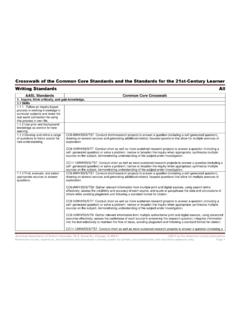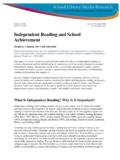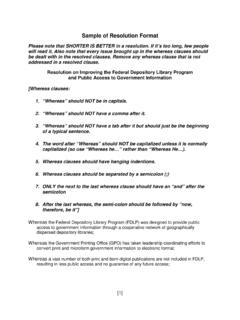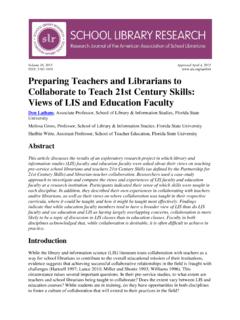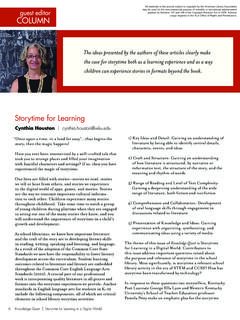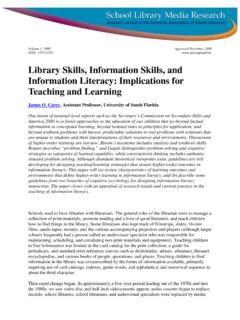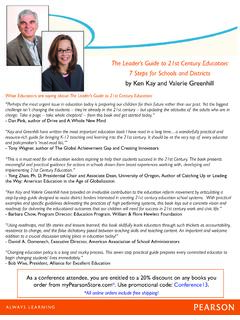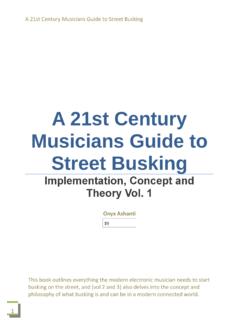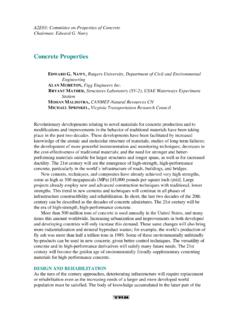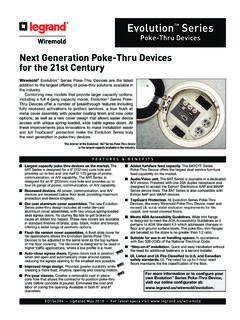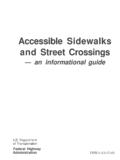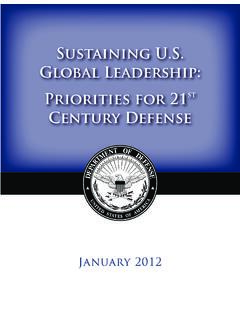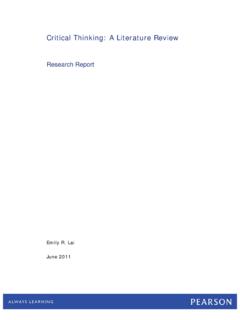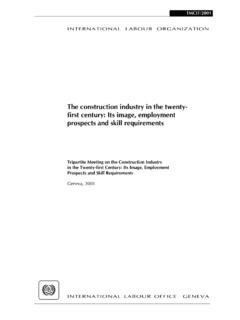Transcription of Crosswalk of the Common Core Standards and the …
1 Crosswalk of the Common core Standards and the Standards for the 21st - century Learner american association of School Librarians, 50 E. Huron St., Chicago, IL 60611 2011 by the american library association Permission to use, reproduce, and distribute this document is hereby grants for private, non-commercial, and education purposes only. Page 1 Writing Standards Sixth/Seventh/Eighth Grade Common core Crosswalk AASL Standards CC6-8WH/SS/S/TS1 Write arguments focused on discipline-specific content. Demonstrate personal productivity by completing products to express learning. Create products that apply to authentic, real-world contexts. CC6-8WH/SS/S/TS1a Introduce claim(s) about a topic or issue, acknowledge and distinguish the claim(s) from alternate or opposing claims, and organize the reasons and evidence logically.
2 Organize knowledge so that it is useful. Organize personal knowledge in a way that can be called upon easily. CC6-8WH/SS/S/TS1b Support claim(s) with logical reasoning and relevant, accurate data and evidence that demonstrate an understanding of the topic or text, using credible sources. Evaluate information found in selected sources on the basis of accuracy, validity, appropriateness to needs, importance, and social and cultural context. Make sense of information gathered from diverse sources by identifying misconceptions, main and supporting ideas, conflicting information, and point of view or bias. Use strategies to draw conclusions from information and apply knowledge to curricular areas, real world situations, and further investigations.
3 Use the writing process, media and visual literacy, and technology skills to create products that express new understandings. Employ a critical stance in drawing conclusions by demonstrating that the pattern of evidence leads to a decision or conclusion. Use valid information and reasoned conclusions to make ethical decisions. CC6-8WH/SS/S/TS1c Use words, phrases, and clauses to create cohesion and clarify the relationships among claim(s), counterclaims, reasons, and evidence. Use the writing process, media and visual literacy, and technology skills to create products that express new understandings. Use writing and speaking skills to communicate new understandings effectively. CC6-8WH/SS/S/TS1d Establish and maintain a formal style.
4 Use the writing process, media and visual literacy, and technology skills to create products that express new understandings. Use writing and speaking skills to communicate new understandings effectively. CC6-8WH/SS/S/TS1e Provide a concluding statement or section that follows from Use strategies to draw conclusions from information and apply knowledge to american association of School Librarians, 50 E. Huron St., Chicago, IL 60611 2011 by the american library association Permission to use, reproduce, and distribute this document is hereby grants for private, non-commercial, and education purposes only. 2 and supports the argument presented. curricular areas, real world situations, and further investigations. Use the writing process, media and visual literacy, and technology skills to create products that express new understandings.
5 Recognize new knowledge and understanding. Use writing and speaking skills to communicate new understandings effectively. Assess the quality and effectiveness of the learning product. Maintain openness to new ideas by considering divergent opinions, changing opinions or conclusions when evidence supports the change, and seeking information about new ideas encountered through academic or personal experiences. Interpret new information based on cultural and social context. CC6-8WH/SS/S/TS2 Write informative/explanatory texts, including the narration of historical events, scientific procedures/ experiments, or technical processes. Demonstrate personal productivity by completing products to express learning. Create products that apply to authentic, real-world contexts.
6 CC6-8WH/SS/S/TS2a Introduce a topic clearly, previewing what is to follow; organize ideas, concepts, and information into broader categories as appropriate to achieving purpose; include formatting ( , headings), graphics ( , charts, tables), and multimedia when useful to aiding comprehension. Organize knowledge so that it is useful. Use the writing process, media and visual literacy, and technology skills to create products that express new understandings. Use technology and other information tools to organize and display knowledge and understanding in ways that others can view, use, and assess. Organize personal knowledge in a way that can be called upon easily. CC6-8WH/SS/S/TS2b Develop the topic with relevant, well-chosen facts, definitions, concrete details, quotations, or other information and examples.
7 Evaluate information found in selected sources on the basis of accuracy, validity, appropriateness to needs, importance, and social and cultural context. Make sense of information gathered from diverse sources by identifying misconceptions, main and supporting ideas, conflicting information, and point of view or bias. Use strategies to draw conclusions from information and apply knowledge to curricular areas, real world situations, and further investigations. american association of School Librarians, 50 E. Huron St., Chicago, IL 60611 2011 by the american library association Permission to use, reproduce, and distribute this document is hereby grants for private, non-commercial, and education purposes only. 3 Use the writing process, media and visual literacy, and technology skills to create products that express new understandings.
8 Employ a critical stance in drawing conclusions by demonstrating that the pattern of evidence leads to a decision or conclusion. Use valid information and reasoned conclusions to make ethical decisions. CC6-8WH/SS/S/TS2c Use appropriate and varied transitions to create cohesion and clarify the relationships among ideas and concepts. Use the writing process, media and visual literacy, and technology skills to create products that express new understandings. Use writing and speaking skills to communicate new understandings effectively. CC6-8WH/SS/S/TS2d Use precise language and domain-specific vocabulary to inform about or explain the topic. Use the writing process, media and visual literacy, and technology skills to create products that express new understandings.
9 Use writing and speaking skills to communicate new understandings effectively. CC6-8WH/SS/S/TS2e Establish and maintain a formal style and objective tone. Use strategies to draw conclusions from information and apply knowledge to curricular areas, real world situations, and further investigations. Use the writing process, media and visual literacy, and technology skills to create products that express new understandings. Recognize new knowledge and understanding. Use writing and speaking skills to communicate new understandings effectively. Assess the quality and effectiveness of the learning product. Maintain openness to new ideas by considering divergent opinions, changing opinions or conclusions when evidence supports the change, and seeking information about new ideas encountered through academic or personal experiences.
10 Interpret new information based on cultural and social context. CC6-8WH/SS/S/TS2f Provide a concluding statement or section that follows from and supports the information or explanation presented. CC6-8WH/SS/S/TS4 Produce clear and coherent writing in which the development, organization, and style are appropriate to task, purpose, and Continue an inquiry-based research process by applying critical thinking skills (analysis, synthesis, evaluation, organization) to information and knowledge in american association of School Librarians, 50 E. Huron St., Chicago, IL 60611 2011 by the american library association Permission to use, reproduce, and distribute this document is hereby grants for private, non-commercial, and education purposes only.
